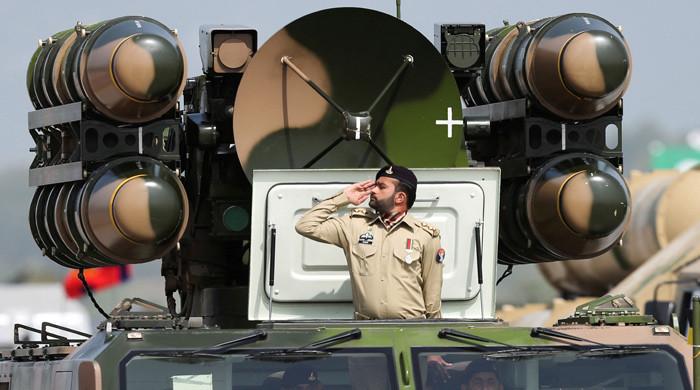In the last phase of Biden’s administration, the American deputy for NSA Jon Finer made shocking comments according to which Pakistan missiles will have the capacity to hit targets far beyond South Asia, including The United States.
It was an unprecedented declaration of any American civil servant, which was a surprise not only for Pakistan, but also for political and missile experts around the world. Fineness, however, could not establish a reason for Pakistan to develop this capacity.
Pakistan replied that its strategic program and allied capacities were only intended to dissuade and thwart a clear and visible existential threat from India and should not be perceived as a threat to any other country. The most plausible reason for this explosion seemed to be an effort to lock the new American administration in a negative connection with Pakistan.
In June 2022 and 2023, the United States released the country joined strategies for India and Pakistan, where the United States “encouraged increased transparency and (unilateral) restraint on nuclear and missile programs in Pakistan So that they do not constitute a threat to the United States or its allies and partners. “At the same time, the United States aims to” expand the cooperation in defense and security with India to improve the ‘Interoperability and help India ensure the security of the Indo-Pacific Region (supposedly) and beyond. ”
On the contrary, the same strategy requires dialogue and regional integration in South Asia. This American approach is at the cost of undermining regional stability in South Asia. How can Pakistan exercise a unilateral reservoir when India quickly develops its offensive military / strategic capacities, including ballistic and cruise missiles, BMD systems and ASAT capabilities?
In the past, Pakistan has always considered the United States as a mediator and a stabilizing factor in its relations with India. The current American strategy to develop a strategic alliance with India while limiting the Pakistan nuclear and missile program seriously won its credibility as an honest broker.
In its geopolitical activities, the United States also compromises its leadership in the World Non-Proliferation, International Law and Order based on rules. Since the United States has hidden in India after the end of the Cold War, political decision-makers in Pakistan have seen a scheme in American policies that ignore non-proliferation priorities on geopolitical interests.
In 2008, the United States’s group of nuclear suppliers (NSG) granted an exemption from India to facilitate its peaceful nuclear cooperation without ensuring its own separation of civil and military programs. This renunciation released the non -disguised civilian nuclear fissile material from India for its military program.
In 2020, the United States reinterpreted its national MTCR policy, which gives it the national discretion to export unmanned air systems (UAS) with a maximum speed of 800 km / HR allowing the United States to export REAPER MQ-9B drones to its allies, including India. The last gap compared to the MTCR directives offers increased flexibility in the United States to export certain missiles, UAS and SLV Systems to advance the defense objectives shared with its close allies. The largest beneficiary of the deviation in American non-proliferation policies is India.
Historically, India has adapted its SLV program, operated by international cooperation in its Agni ballistic missile program. Ironically, the former American assistant of the NSA during his speech in Carnegie also indicated that the United States was changing his national memorandum on the MTCR directives intended to facilitate greater spatial cooperation with American allies like India.
India’s space technology has directly influenced its intercontinental ballistic missile program (ICBM). With the help of Russian technology, India has developed space launch vehicles such as GSLV, PSLV and SLV technologies that have since been adapted to military use. Today, India has a large arsenal of missiles, capable of delivering conventional and nuclear warheads.
Among these, the Agni-V has a range of 8,000 kilometers, while the Agni-Vi covers 10,000 to 12,000 kilometers. In an alarming development, India has recently deployed Agni-V missiles. Meanwhile, the Surya missile program of India remains enveloped in secrets. India, under American pressure, has chosen not to disclose the full extent of its Surya ICBM project to avoid alarming world powers such as the United States, the United Kingdom and France.
Officially, India maintains that its missile program is designed as a means of deterrence against regional threats such as China and Pakistan. However, its growing scope means that cities like London, Paris and even New York could possibly fall from a strike.
Despite this proliferation record and the inter-exchange of space and missile programs, it has been able to deepen its international cooperation in space with major space nations, especially the United States. Hypersonic missile tests by India, the missile cans, the increase in their status of prosecution, the increase in accuracy / the details of new missile systems and the counter-deforce, the tests On the ASAT missiles and the DMO undermine regional and global strategic stability.
There is a paradox visible in the American position, where it does not seem to be concerned with the capacities of “already ripe” missiles of India with ranges far beyond China, which can target the American bases in the oceans Indians and peaceful and also its allies. While Pakistan also does not intend to intend or the ability to harm American interests, but is always targeted by the United States on the “perceived hypothesis” that it will have an ICBM capacity after a decade.
Pakistan has always declared that its deterrent capacity only aims to maintain deterrence against the aggression of India. Islamabad maintains that the raison d’être of its strategic capacities has always been India and will continue to remain so. However, the country continues to develop limited capacities to maintain the credibility of deterrence in the ambitious military and strategic development program of India.
Rather than being swept away by Biden’s approach, it is possible for Trump to feed peace and stability in South Asia. This can only come from balanced American policies to India and Pakistan. Islamabad should accommodate any peace openness which can provide stability in the region.
Warning: The points of view expressed in this play are the own writers and do not necessarily reflect the editorial policy of PK Press Club.TV.
The writer is the executive director of the Center for International Strategic Studies. It can be reached: [email protected]
Originally published in the news




